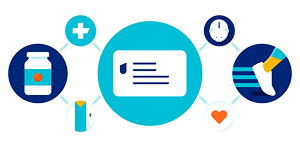It can be difficult to get moving every morning if you’re in pain — especially if you have achy joints. You might have arthritis, which is the swelling of one or more of your joints, like in your knees or shoulders.
Guess what: You’re not alone. Nearly 60 million American adults age 18 and over experience the aches and pains of arthritis, according to recent data from the Centers for Disease Control and Prevention (CDC). That number could rise to nearly 80 million by 2040.
Unfortunately, there’s no cure for arthritis, and it worsens with age, according to Dr. Angus B. Worthing, M.D., a rheumatologist at Arthritis and Rheumatism Associates in Washington, D.C. But there are treatments you can try in the comfort of your own home.
“We don’t have a way to reverse arthritis, but there are lots of methods of pain relief,” says Dr. Worthing, who also serves as clinical assistant professor of medicine at Georgetown University Medical Center. “This condition definitely is something people can treat.”
Below, find out what you should know about arthritis and some of the ways you can treat it.
1. Two types of arthritis are very common
You might be surprised to learn that of the more than 100 types of arthritis that exist, 2 types are the ones many people have.
One is called osteoarthritis, and it happens when the protective tissue (cartilage) that cushions the ends of your bones wears down, causing the bones to rub together. It tends to be most common in older adults, but it can affect younger people too.
The other is called rheumatoid arthritis. It’s an autoimmune disease that develops when the immune system mistakenly attacks the body’s own tissue, causing painful swelling in the lining of certain joints such as the wrist and fingers. It can even cause problems in the lungs, heart, and eyes. And it can develop at most any age.
Dr. Worthing likens osteoarthritis to “mechanical difficulties” and says it arises when “something in the machinery breaks down.” He notes that it most commonly affects the hips and knees.
Both types of arthritis can be managed with early detection.
“Early referral and treatment can be critical in reducing disease activity, preventing orthopedic surgeries on joints, and prolonging health and life,” says Dr. Worthing. “Don’t ignore the signs of inflammatory arthritis, such as prominent morning stiffness and swelling in multiple joints.”
2. You can help treat arthritis at home with over-the-counter medicines
So you’re experiencing joint pain. After scheduling an appointment to see your doctor, they might tell you there are things you can do to treat it.
Dr. Worthing suggests a few simple at-home remedies:
- You can take over-the-counter drugs that are known to reduce minor aches and pains, like acetaminophen.
- You can try capsaicin, which is often used to treat nerve pain, comes in a cream or lotion, and is available over the counter. Another over-the-counter option is Voltaren, which comes in a gel.
- You can use other over-the-counter drugs such as ibuprofen and naproxen, though Dr. Worthing cautions against relying too heavily on them because they can cause bleeding, kidney problems, and stomach ulcers.
- You can add turmeric (a spice) to your diet, which has been proven in two separate studies to relieve swelling and inflammation in certain joints.
Dr. Worthing says you should be careful with herbal treatments because many of those products haven’t been properly tested, could interact with your other medications, and potentially harm you.
3. You can help prevent arthritic pain through regular exercise
It may seem counterintuitive, but regular exercise can ease the aches and pains that come from arthritis. Preferably, you’d do that with a licensed fitness instructor.
Dr. Worthing notes that official guidelines from the American College of Rheumatology published in 2019 suggest that physical therapy and other guided exercise programs like tai chi and yoga are methods for strengthening muscles around joints. This, in turn, takes some pressure off the joints themselves.
Keeping yourself moving isn’t the only way to prevent arthritic pain.
“There are a lot of things people can do to relieve pain, which is often in terms of what we prescribe,” he says. “Since we don’t have a drug to stop arthritis, we often have to get creative in helping people overcome this.”
One of these ways may be applying heat or cold to the part of your body that’s in pain. Dr. Worthing points out that limited data suggests that icing sore joints can reduce inflammation and that heat therapy can help with low back pain.
“I can’t predict whether heat or cold are going to help,” he says. “My advice to patients is usually to try both and see which one works better.”
Ready to explore insurance plans where you live?
4. You can see a rheumatologist if your symptoms don’t go away
Most of the time, achy joints are a symptom of osteoarthritis. Sometimes, however, they could be a clear indication of something more.
Dr. Worthing says 2 signs that might indicate rheumatoid arthritis or related conditions such as lupus (an autoimmune disease) and Lyme disease (caused by 4 kinds of bacteria) are joint swelling and stiffness in the morning that lasts longer than 30 minutes.
“If it’s taking you a half hour or all morning to bend your joints when you get out of bed, that could be an autoimmune disease and should be checked out by a rheumatologist immediately,” says Dr. Worthing.
This advertisement contains information compiled by UnitedHealthcare. UnitedHealthcare does not represent that these are statements of fact. Please consult directly with your primary care physician if you need medical advice.
UHOARTHJOINTA1
Source List:
American College of Rheumatology. "2019 American College of Rheumatology/Arthritis Foundation Guideline for the Management of Osteoarthritis of the Hand, Hip, and Knee." February 2020. Retrieved from https://www.rheumatology.org/Portals/0/Files/Osteoarthritis-Guideline-Early-View-2019.pdf.
Centers for Disease Control and Prevention. "National Statistics." October 12, 2021. Retrieved from https://www.cdc.gov/arthritis/data_statistics/national-statistics.html.
Clinical Medical Insights: Arthritis and Musculoskeletal Disorders. "Osteoarthritis in Young, Active, and Athletic Individuals." May 22, 2014. Retrieved from https://www.ncbi.nlm.nih.gov/pmc/articles/PMC4039183/.
J Med Food. "Efficacy of Turmeric Extracts and Curcumin for Alleviating the Symptoms of Joint Arthritis: A Systematic Review and Meta-Analysis of Randomized Clinical Trials." August 19, 2016. Retrieved from https://pubmed.ncbi.nlm.nih.gov/27533649/.











